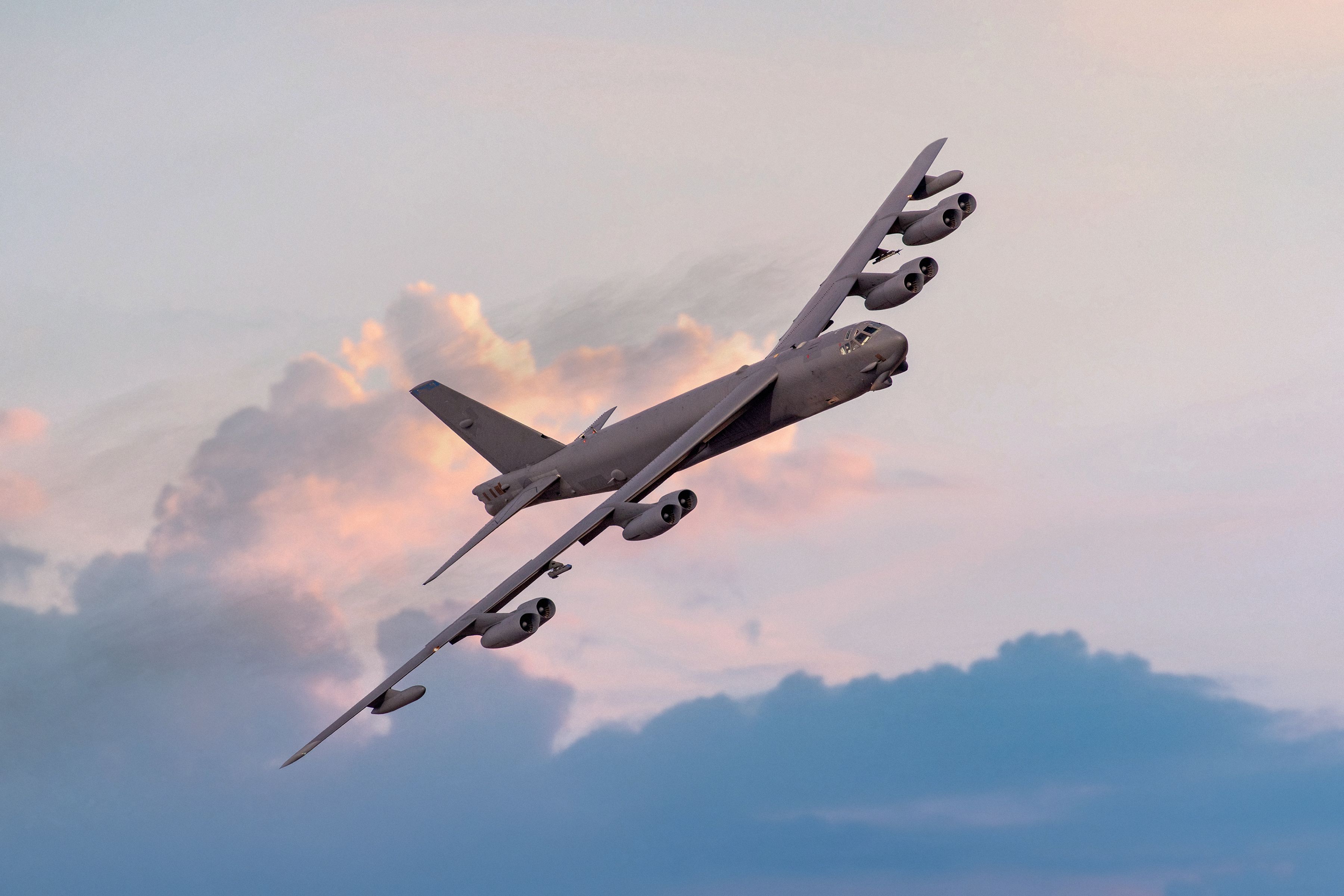Summary Crabbed landing is a difficult maneuver, with a fuselage angled into the wind to counteract crosswind. B-52 Stratrofortresses perform a crabbed landing uniquely due to their size and structure. B-52s land using steerable bogies to align with the runway in a crab-like maneuver.
A crabbed landing is performed during crosswind when an aircraft is landed by pointing the nose of the aircraft into the wind on landing. The name comes from how crabs walk sideways on the beach (crabs face one direction but walk in a different direction). As the nose of the aircraft points into the wind, the aircraft moves towards the runway.

B-52 Stratrofortresses can't perform crabbed landing like normal aircraft. The way B-52s perform a crabbed landing is unique and is one of the many unique features of the B-52 . What a crabbed landing is During a crabbed landing approach, there are four phases: the approach phase, the final approach, the touchdown, and the rollout.
During the approach phase, the pilot flies the aircraft towards the runway with the nose pointed into the wind to counter the crosswind . This means the aircraft's fuselage is not lined up on the runway but is angled somewhat into the wind. Just before touching down, the pilot may perform a makeover known as "de-crabbing" or "kicking out" by aligning the aircraft's fuselage with the runway centerline.
The pilot maintains the crab angle on the final approach to counteract the crosswind and keep the aircraft tracking straight toward the intended touchdown point on the runway. As the aircraft rolls out, the pilot keeps the fuselage aligned with the runway centerline while using the ailerons and rudder to counter any crosswind. Crabbed landing is a maneuver many commercial airliners perform while landing.
The B-52 has been the mainstay US strategic bomber for seven decades. A major reason for its staying power has been its versatility. How a B-52 Stratofortress crab lands The B-52 Stratofortress is a massive aircraft with a huge wingspan and cannot perform a crabbed landing in the normal sense.
It flies aligned with the runway's center and not with the wind. The expansive wingspan of the mighty B-52 makes the crab-walk descent impractical. As the aircraft touches down, its main landing gear is in a rotated position.
B-52 Stratofortess capabilities Range: 8,800 miles Service ceiling: 50,000 feet Speed: 650 mph Payload: 70,000 lbs Armament: Both conventional and nuclear Instead, the aircraft can sort of uniquely do in the touchdown and rollout phase. The War Zone states, " the B-52 was built with the ability to set its swiveling landing gear to the heading direction of the runway. This capability allows the B-52 to land like no other aircraft, basically crabbing through touchdown and rollout during higher crosswind conditions .
" This enables the B-52 to take off and land safely in more adverse weather conditions. To aid in landing in cross winds, the B-52's outrigger wheels are positioned much closer to the wingtip of the B-52 compared to its B-47 processor. "An interesting feature of the B-52 landing gear greatly eases the problems posed by crosswind landings.
Both the front and rear bogies can be set at angles of as much as 20° to either side of the straight-ahead position. In a crosswind landing, consequently, the aircraft can be headed directly into the wind while rolling down a runway not aligned with the wind." - NASA A B-52 strategic bomber performs a crabbed landing by using steerable bogies that can be angled up to 20 degrees left or right of the centerline.
This enables the B-52 (colloquially "BUFF" - "Big Ugly Fat F***er") to align the wheels with the runway centerline for a straight rollout. This is similar to the crabwalk feature on GMC's Hummer EV (the four-wheel-drive can turn the rear wheels by 10 degrees, allowing the vehicle to move at an angle). B-52 Stratofortress timeline: First flight: 1952 Entry into service: 1955 Number in service: 58 (active 2019) B-52J operational date: expected 2033 Planned retirement: approx.
2060 According to the Aviationist , " The pilot can simply input the runway’s heading using a rotary dial in the cockpit, and the landing gear will automatically align with the selected compass heading throughout the aircraft’s approach. This adjustment minimizes the side load on the landing gear and ensures stable ground contact ." According to a new report, the upgraded, re-engined B-52J Superfotresses are not expected to enter service until 2033.
Watching B-52s crab landing is eye-catching Watching the B-52 land with its wheels set at an angle is certainly something eye-catching. It almost looks as though the giant bomber has hit black ice and is skidding sideways. Dubbed the Big Ugly Fat F***er by its operators, the B-52 is notoriously slow to respond to pilot inputs on flight control surfaces - this is even more pronounced at low altitudes and speeds.
The B-52 may be many things, but maneuverability is not one of them. The B-52 is an aircraft with piles of personality. The bomber first flew in 1952, entered service in 1955, and has long been a symbol of US air power.
The B-52 was meant to be replaced by the B-1 Lancer - which was in turn to be replaced by the B-2 Spirit stealth bomber. The B-52 is now planned to keep flying alongside the B-21 Raider long into the 2050s or even 2060s. With the B-1 Lancer slatted for retirement by 2036 and the B-2s in the 2030s or 2040s, the B-52 is set to outlive its successor's successor.
.



















